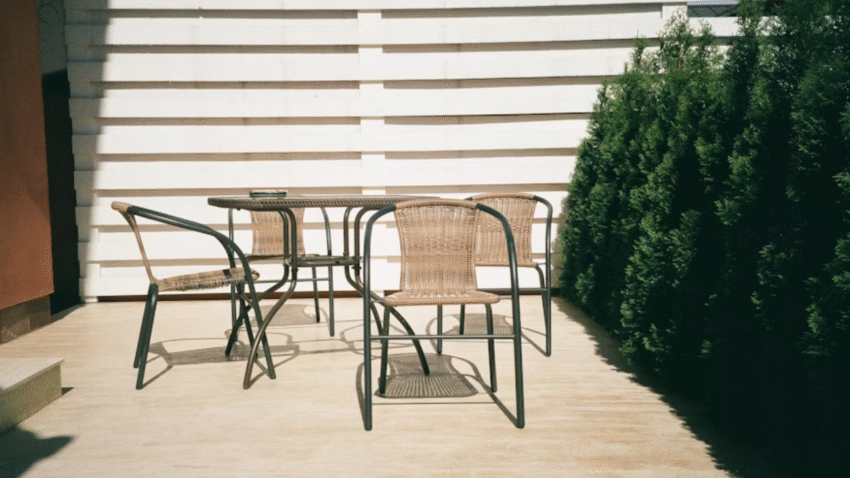Introduction
Outdoor tile patios are stylish, durable, and functional—but over time, grout can crack, crumble, or discolor due to constant exposure to weather, moisture, and foot traffic. Weak grout not only looks unattractive but also allows water to seep underneath tiles, leading to loosening or damage. Learning how to re-grout patio tiles outdoors restores strength, prevents water damage, and keeps your patio looking fresh and inviting.
Why Re-Grouting Matters
Re-grouting isn’t just a cosmetic upgrade—it’s essential maintenance:
- Strengthens Tile Bonds: Keeps tiles firmly in place.
- Prevents Water Damage: Stops moisture from seeping into the base.
- Improves Aesthetics: Fresh grout revives the patio’s overall look.
- Extends Longevity: Maintains durability of both grout and tiles.
- Reduces Weed and Algae Growth: Sealed grout joints block unwanted growth.
By re-grouting, you protect both the structure and beauty of your patio.
Step-by-Step Guide to Re-Grouting Outdoor Patio Tiles
1. Gather Tools and Materials
You’ll need:
- Grout saw, oscillating tool, or multi-tool with grout removal blade
- Hammer and chisel (for stubborn grout)
- Shop vacuum or brush
- Outdoor-grade grout (sanded for joints wider than 1/8 inch, unsanded for smaller joints)
- Grout float or rubber trowel
- Bucket and sponge
- Mixing paddle and drill (if using powdered grout)
- Grout sealer (penetrating type for outdoor use)
- Safety gear: gloves, goggles, dust mask
Optional: Pressure washer for initial cleaning, painter’s tape to protect tile edges.
2. Inspect and Prepare the Area
- Identify damaged or missing grout lines.
- Tap tiles to ensure they’re still solid. If any are loose, re-set them with thinset mortar before re-grouting.
- Clean patio surface of dirt, moss, and debris with a hose or pressure washer. Allow to dry completely.
3. Remove Old Grout
- Use a grout saw or oscillating tool to cut into old grout lines.
- For stubborn or deep joints, carefully chip out with a hammer and chisel.
- Avoid damaging tile edges—take your time.
- Vacuum or brush out dust and debris from joints.
4. Clean Joints Thoroughly
- Wipe joints with a damp sponge or cloth to remove fine dust.
- Allow joints to dry before applying new grout. Clean, dry gaps ensure proper bonding.
5. Mix New Grout
- If using powdered grout, follow manufacturer instructions.
- Mix to a peanut-butter consistency—smooth, not runny.
- Let grout rest (slake) for 5–10 minutes, then remix before application.
6. Apply Grout to Joints
- Load grout onto a rubber float.
- Spread diagonally across tiles, pressing grout firmly into joints.
- Work in small sections to prevent drying before cleanup.
- Ensure all gaps are completely filled with no air pockets.
7. Remove Excess Grout
- Hold the float at a 45-degree angle and scrape diagonally across tiles to remove excess.
- Leave joints slightly overfilled—they’ll settle during cleanup.
8. Initial Cleaning
- After 10–15 minutes, wipe tiles with a damp sponge.
- Rinse sponge frequently and wring out well to avoid washing out grout lines.
- Shape joints by running sponge gently along them.
9. Final Cleanup
- Allow grout to set for 1–2 hours.
- Buff tile surfaces with a dry cloth to remove haze.
- For stubborn haze, use a grout haze remover or diluted vinegar solution (avoid vinegar on natural stone).
10. Cure and Seal the Grout
- Let grout cure for at least 24–48 hours (check product instructions).
- Apply a penetrating grout sealer to protect against moisture, staining, and algae.
- Reapply sealer every 1–2 years for best results.
Common Mistakes to Avoid
- Mistake: Leaving Old Grout Behind
New grout won’t bond well to failing grout.
Solution: Remove all loose or crumbling grout before reapplying. - Mistake: Using Indoor Grout Outdoors
Indoor grout won’t withstand weather conditions.
Solution: Always use outdoor-rated grout for patios. - Mistake: Overwatering During Cleanup
Too much water washes grout out of joints.
Solution: Use a lightly damp sponge and rinse frequently. - Mistake: Skipping Sealer
Unsealed grout absorbs water and stains quickly.
Solution: Seal thoroughly once grout cures. - Mistake: Rushing Curing Time
Walking on grout too soon weakens joints.
Solution: Wait the full curing period before heavy use.
Extra Patio & Deck Tips & Hacks
- For wide joints, use sanded grout for better strength and crack resistance.
- Add color-matched grout for a seamless look or contrast grout for decorative appeal.
- If tiles are porous, apply a tile sealer before grouting to prevent staining.
- Schedule re-grouting during dry, mild weather to avoid issues with curing.
- Keep a small bag of extra grout for future touch-ups.
Looking for more outdoor tile care? See our guide on how to clean outdoor tiles on a patio.
Conclusion
Learning how to re-grout patio tiles outdoors is a rewarding DIY project that restores both the beauty and durability of your outdoor space. By removing old grout, carefully applying new outdoor-rated grout, and sealing it for protection, you can enjoy a refreshed, stronger patio for years to come.
Pro tip: Preventative maintenance goes a long way—keep joints sealed, sweep regularly, and address small cracks before they spread. Bookmark this guide to keep your tiled patio in top condition season after season.
